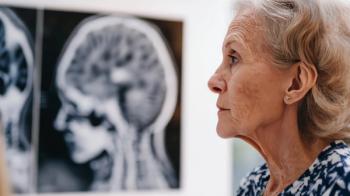
Neurologists Urged to Clear the Air
Joseph I. Sirven, MD, and Joseph F. Drazkowski, MD, neurologists at the Mayo Clinic in Phoenix, led a recent study in partnership with the Walter Cronkite School of Journalism and Mass Communication at Arizona State University (ASU) to determine how well medical risks and treatment advances for neurologic conditions are conveyed in US newspaper articles.
Joseph I. Sirven, MD, and Joseph F. Drazkowski, MD, neurologists at the Mayo Clinic in Phoenix, led a recent study in partnership with the Walter Cronkite School of Journalism and Mass Communication at Arizona State University (ASU) to determine how well medical risks and treatment advances for neurologic conditions are conveyed in US newspaper articles.1 Their findings reveal that coverage of neurologic disorders does not always correlate with the prevalence of the disorders and that more collaboration is needed between journalists and neurologists to better educate the public.The study group researched The New York Times and 8 regional newspapers with a circulation of at least 200,000. Analysis of 1201 stories (with a potential readership of 6 million) that contained 1 or more of 11 neurologic search terms demonstrated that the most prevalent neurologic conditions, such as migraine and head trauma, were the least covered. Alzheimer disease and other dementias, followed by Parkinson disease (PD), were the most frequently covered.Twenty percent of newspaper stories pertaining to neurologic diseases that were analyzed over a 1-year period carried inaccuracies, overstated symptoms, or contained stigmatizing terms, according to Joseph Caspermeyer, a graduate student at ASU who presented the study findings in a scientific poster presentation at the American Academy of Neurology (AAN) annual meeting in Miami Beach, Fla, in April.Stories on migraine contained the greatest stigma bias, followed by PD, brain trauma, and amyotrophic lateral sclerosis (ALS). The most common users of stigmatizing language were reporters (40%), followed by parents (15%), friends (15%), the patient (13%), and physicians (12%).Examples of stigmatizing language cited in the study include:-The disease "crippled his being" -reporter, Chicago Sun Times.-"Evil disease struck" -patient, Atlanta Journal Constitution.-"Awareness of plague is critical; a lot of people with this disease will just lie down and die" -ALS patient, San Diego Union Tribune.About 14% of the stories were about celebrities with diseases; one third dealt with the late Pope John Paul II's struggle with PD. One such story stated: "The pontiff's ability to speak, write, walk and stand will become more limited by the year. Dementia will soon follow." (Boston Globe, October 15, 2003).At a national conference on "Medicine and the Media," presented in September 2002 at the Mayo Clinic in Rochester, Minn, Frank Newport, PhD, editor-in-chief of The Gallup Poll, presented results of a Gallup survey to determine where Americans get their health information and which sources they most trust.2 "Americans get more health and medical news from television than from any other media source, but [they] rate health news on television very low in terms of trust and credibility," Newport said. "Americans get relatively little health news from the Internet, although its credibility is higher than that of television. Americans say media health reports confuse them as much as enlighten them, and almost half say they sometimes ask their doctors specific questions as a direct result of something they have heard or read in the news media or on the Internet. The public has higher levels of trust in doctors than it does in any media source of health news tested."When dealing with reporters, neurologists can benefit from tips that have been given to AAN members:-Be prepared with a few key messages that you want to convey, and stay on message.-Anticipate and be prepared for controversial or otherwise challenging questions that may be asked.-Avoid scientific jargon and acronyms, and take additional time to explain technical concepts if you sense it is needed.-Be sensitive to how terms will be perceived by various audiences, and identify any limitations about a study being discussed.Kathy Stone is a freelance writer in St Paul.REFERENCES1. Caspermeyer J, Sirven J, Drazkowsk J, et al. Brain stains: a study of accuracy and stigmatizing language in neurology coverage by 9 US newspapers. Neurology. 2005;64(suppl 1):A30.2. Newport F. Americans get plenty of health news on TV, but tend not to trust it. The Gallup Organization; Washington, DC: September 27, 2002. Available at http://www.gallup.com/ poll/content/ default.aspx?ci=6883. Accessed April 26, 2005.
Newsletter
Receive trusted psychiatric news, expert analysis, and clinical insights — subscribe today to support your practice and your patients.















